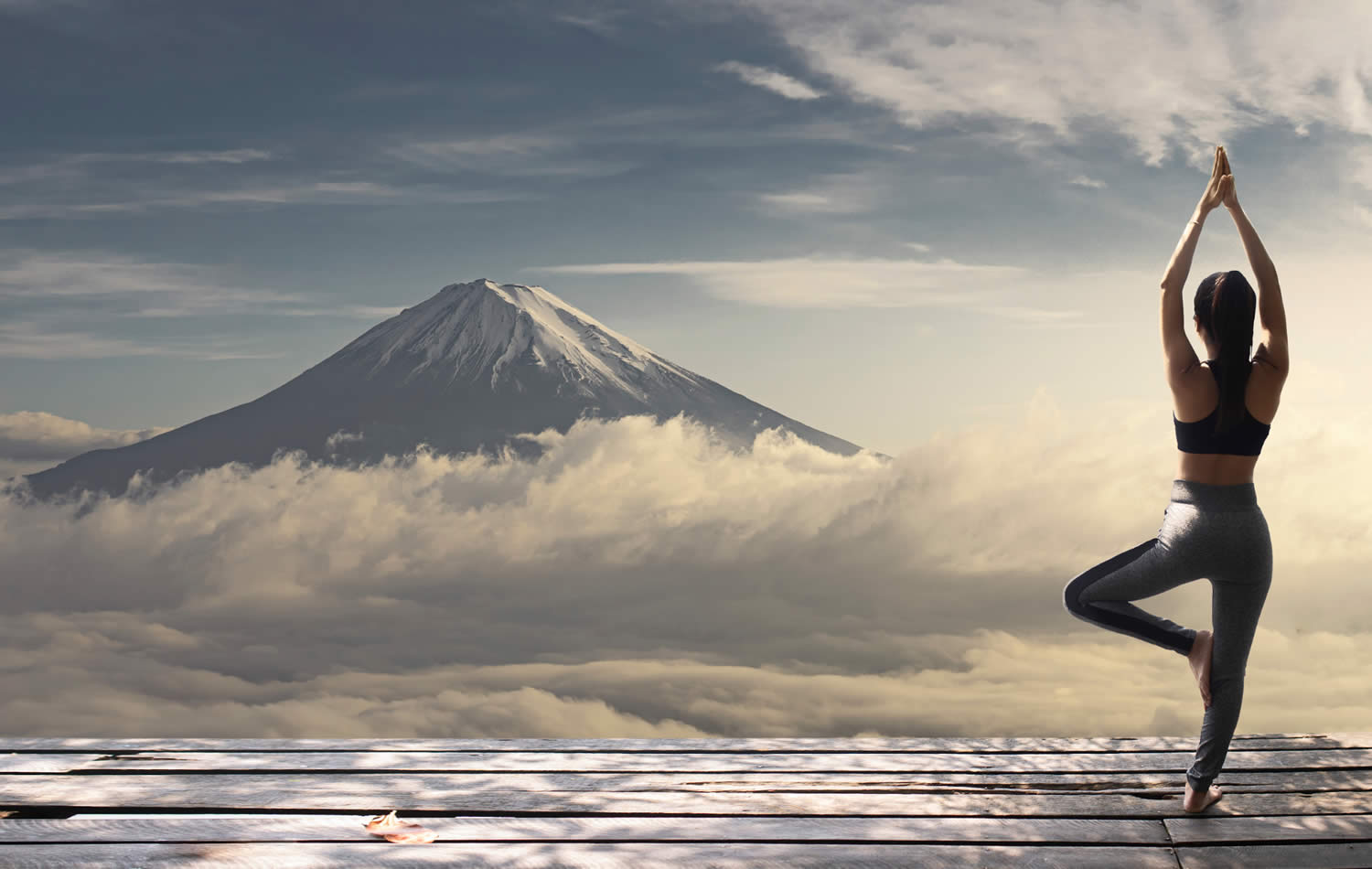Yoga in Japan has steadily gained popularity over the years, attracting both locals and tourists alike with its unique blend of traditional practices and modern sensibilities. Japanese yoga, also known as shin-shin-toitsu-do, is an ancient meditative practice focusing on the unification of the mind and body. It incorporates self-healing through the power of autosuggestion, along with the familiar elements of stretches, meditation, and breathing techniques associated with yoga.
In recent years, several yoga retreats and studios have been established across the country, catering to a diverse clientele. These retreats often combine yoga practice with the peaceful harmony of Japan’s natural surroundings, enhancing the overall experience and providing an opportunity to fully immerse oneself in the tranquility of Japanese culture. These facilities offer classes for various levels of expertise, from beginners seeking a gentle introduction to the practice to advanced practitioners eager for a challenge.
As more people discover the benefits of yoga in Japan, this holistic practice continues to grow in popularity and evolve, blending the rich cultural heritage of the island nation with the world of yoga. The fusion of traditional and contemporary practices within Japanese yoga creates an unparalleled experience, helping practitioners foster both mental and physical well-being while deepening their understanding of Japanese culture and spirituality.
Contents
History and Evolution of Yoga in Japan
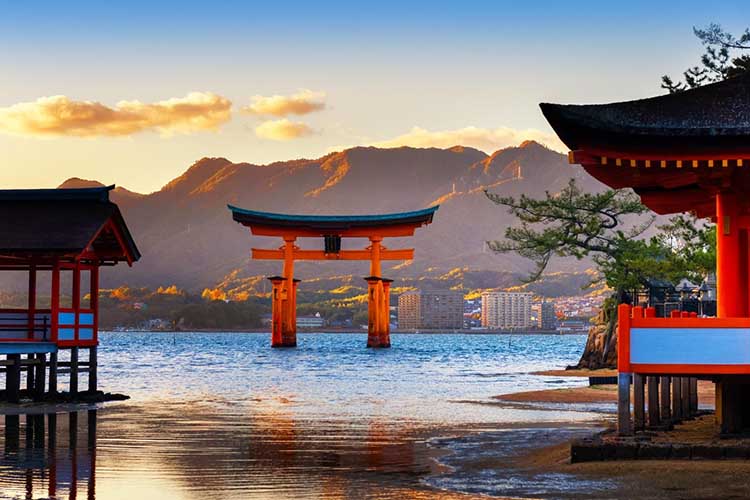
Yoga in Japan has a rich history that dates back to the early 20th century. The practice of Japanese Yoga, also known as Shin-shin-toitsu-do, originated with a martial artist named Tempu Nakamura, who had served in the Imperial Japanese Army. After recovering from a severe tuberculosis attack at age 30, Tempu sought ways to improve his physical and mental well-being, eventually leading to the development of this unique form of yoga.
The influence of yoga in Japan can be traced even further back to medieval times when Buddhism held significant military and political power. During this period, yogic meditation was practiced as a solemn rite in temples, serving as a source of magical power and uniting the culture with its ancient spiritual roots. Samurai and noble families also competed for influence over Buddhism, as it played a crucial role in Japanese society.
Under the Tokugawa rule in early modern Japan, a different form of meditation emerged, influenced by the teachings of Confucianism. This practice, known as ‘quiet sitting,’ became an ethical discipline for the samurai, further establishing the significance of mindfulness and meditation in Japanese culture.
However, the practice of yoga in Japan faced a significant setback in 1995 following a nerve gas terrorist attack on the Tokyo subway, which was carried out by a cult that recruited members through yoga classes. Despite this tragic event, yoga therapy continued to grow and is now popular and widespread throughout the country, displaying Japan’s resilience and dedication to promoting well-being.
From ancient temples to modern studios, the history of yoga in Japan demonstrates its deep connection with the nation’s culture and values. As the practice continues to evolve, it remains an essential component of Japanese society, serving as a testament to the power and longevity of this ancient discipline.
Popular Yoga Studios in Japan

Tokyo
Tokyo, Japan’s vibrant capital, serves as an exciting backdrop for the exploration of yoga, with studios sprinkled across the city catering to diverse interests and levels of experience. One of the popular English-friendly yoga studios is Nami Yoga Studio in Akasaka, which offers classes for people ranging from complete beginners to experienced practitioners.
Nestled in the bustling Shibuya district, Santhosha Yoga offers a serene sanctuary amidst the city’s fast-paced rhythm, promoting a journey of mindfulness and well-being through a blend of traditional and contemporary yoga practices. Not far from Shibuya, in the trendy district of Omotesando, the International Yoga Center stands out with its modern approach to yoga, offering a variety of yoga styles to cater to the diverse demographic of the city. A little further away, in the internationally flavored neighborhood of Hiroo, Yoga Tree provides a welcoming atmosphere with a holistic approach to yoga that suits all levels of practitioners.
Osaka
Osaka, a vibrant and bustling city, is also a flourishing hub for yoga. Yoga studios in Osaka are as diverse as the cityscape itself, each offering their unique take on the ancient practice.
Right in the dynamic center of Osaka, Vancouver Sky Studio stands as a calming retreat that encapsulates the spirit of Vancouver, offering yoga classes taught in English with a distinctive North American touch. In its vicinity, Yoga Lotus Temmabashi distinguishes itself with a remarkable focus on customer service and professional instructors. Their weekly schedules, readily accessible online, allow potential yogis to conveniently choose a class that best aligns with their language preference and skill level. A stone’s throw away is Spirit Yoga Studio. Since its establishment in 2007, it has carved a niche for itself in the yoga community, presenting an array of yoga styles from Hatha to Pre-natal. English classes are plentiful here, expertly led by a diverse mix of international and Japanese staff.
Okinawa
In Okinawa, there are a select few English-speaking yoga studios that cater to different styles and preferences. The Okinawa Yoga Studio, located in Chatan, offers a functional fitness style of yoga aimed at building a more fit and active community. They provide a variety of fun, energetic yoga classes including Hot Yoga, Heated Power Yoga, Aerial Yoga, Yin Yoga, and Prenatal Yoga. Also in Chatan, Yoga Tree Okinawa offers a more personalized approach to yoga practice. Their small class environment allows for a more intimate experience. They offer a variety of classes, from sweaty Vinyasa to relaxing Yoga and deep Yin, all aimed at fostering a deep mind-body connection.
In Naha, Fe-nu Yoga Studio focuses on the traditional practice of Ashtanga Yoga. The studio emphasizes the importance of correct breathing techniques and flowing postures, which warm and soften the body while also building stamina.
Yoga Community and Classes
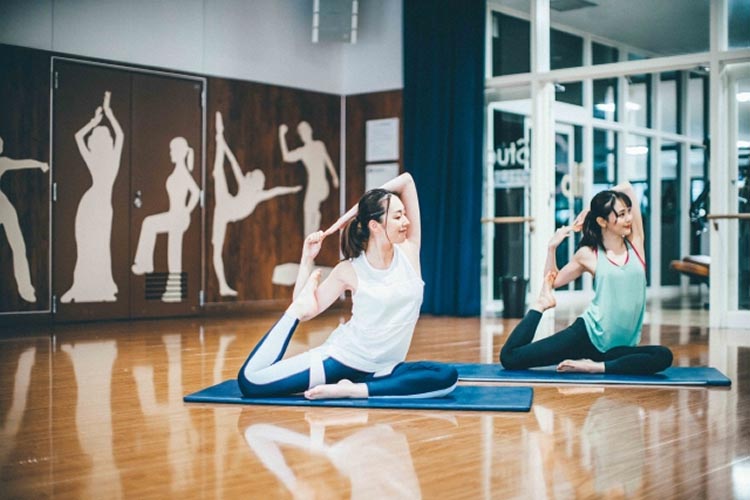
The yoga community in Japan is diverse, attracting people from various backgrounds who are seeking the benefits of this holistic practice. Many yoga studios in Japan offer classes for beginners, intermediate, and advanced practitioners, making it possible for everyone to find a suitable practice level.
English-speaking instructors are available at several yoga studios especially in big cities like Tokyo or Osaka, catering to the needs of foreigners and locals who wish to practice yoga in an international environment.
For those who prefer a more immersive Japanese experience, some classes in Japan are taught at regional community centers. These classes are usually held once per week and taught in Japanese, with many participants being women, but also including a few retired men. The lesson fees for community center classes are generally quite inexpensive, ranging from $5-10USD per month.
There are various yoga retreats in Japan as well. These events offer a unique experience to practice yoga in beautiful Japanese scenery. Yoga retreats in Japan can include not only a wide variety of yoga classes, but also enjoyable excursions, encouraging a deeper connection to the culture and nature of the country.
Yoga Styles Commonly Practiced in Japan
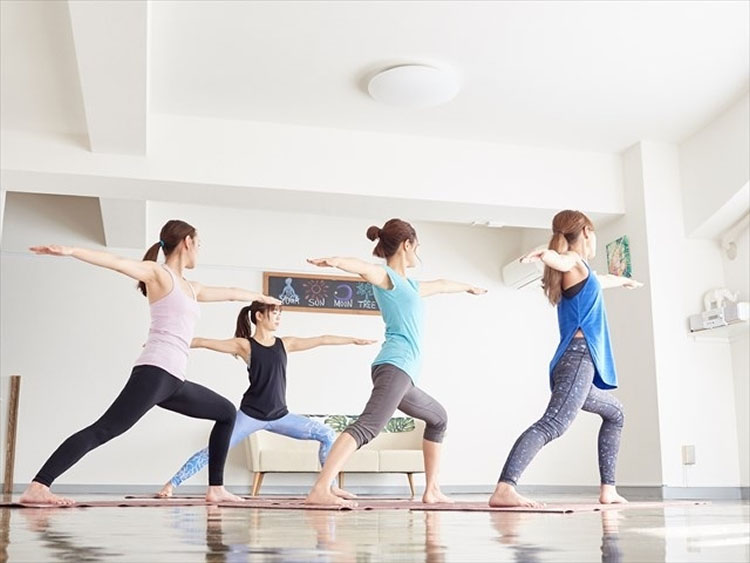
Vinyasa Yoga
Vinyasa Yoga is quite popular in Japan and is characterized by its fluid movement and focus on connecting breath with movement. This style of yoga emphasizes transitions between poses and typically involves a series of postures called “vinyasa flow.” Japanese Vinyasa Yoga classes tend to be energetic and dynamic, making them suitable for individuals who seek a more challenging and robust workout.
Hatha Yoga
Hatha Yoga is often considered the foundation of many modern yoga styles and has a strong presence in Japan. This style focuses on physical postures (asanas) and breathing techniques (pranayama). Japanese Hatha Yoga classes are typically slower-paced, with a greater focus on alignment and holding poses for an extended period. This style is ideal for beginners or individuals who prefer a more gentle and mindful practice.
Power Yoga
Power Yoga is known for its emphasis on strength, flexibility, and endurance. This style is a more vigorous and fitness-centric approach to yoga, inspired by Ashtanga Yoga. In Japan, Power Yoga classes usually involve faster-paced sequences, building heat and challenging the body physically. This style is suitable for individuals looking for a more intense practice that incorporates cardio and strength training elements.
Bikram Yoga
Bikram Yoga, also known as “hot yoga,” is practiced in a heated room with a series of 26 postures and two breathing exercises. Inspired by Bikram Choudhury and later Japanese adaptations, Lava Yoga is an example of a successful business model offering this style. Bikram Yoga in Japan often attracts young, fitness-minded individuals who enjoy its intense nature and the additional challenge of practicing in a hot environment.
Benefits of Yoga Practice
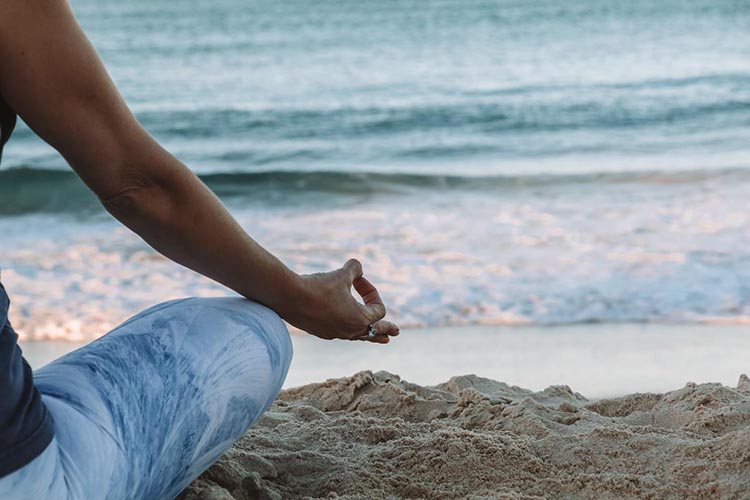
Yoga is a popular form of exercise and meditation, originating from ancient India, that has gained worldwide recognition, including in Japan. This practice offers a wide variety of benefits not only for the body but also for mental and emotional well-being.
One of the primary benefits of yoga is the improvement of strength and flexibility. Regular practice helps stretch and strengthen muscles, which in turn promotes better posture and reduces the risk of injury during other physical activities. Moreover, yoga can serve as an effective form of exercise that contributes to weight loss, especially when combined with a healthy diet and other physical activities.
Incorporating breathing exercises in yoga helps individuals develop better respiratory habits, leading to increased lung capacity and improved overall respiration. This focus on breathing also has a calming effect on the mind, aiding in relaxation, reducing stress and anxiety – key factors in the improvement of overall mental health.
Yoga serves as a powerful tool to enhance the connection between the mind and body. Through meditation and mindful awareness of physical movements, practitioners can develop a deeper understanding of their body’s needs and limitations. This increased self-awareness can lead to improved self-esteem and a healthier relationship with oneself, contributing to a decrease in ego-driven behaviors and decisions.
Finally, yoga provides an excellent complement to other fitness routines by promoting relaxation and muscle recovery after strenuous workouts. The focus on stretching and breathing exercises can help reduce muscle soreness and speed up the recovery process, allowing individuals to maintain a consistent exercise schedule without overtaxing their bodies.
In summary, yoga offers numerous benefits for practitioners in terms of fitness, exercise, meditation, and breathing. By incorporating yoga into a regular routine, individuals can improve their strength, flexibility, posture, and overall mind-body connection, making yoga a valuable addition to anyone’s wellness journey.
Beyond Yoga: Wellness Retreats and Alternative Practices
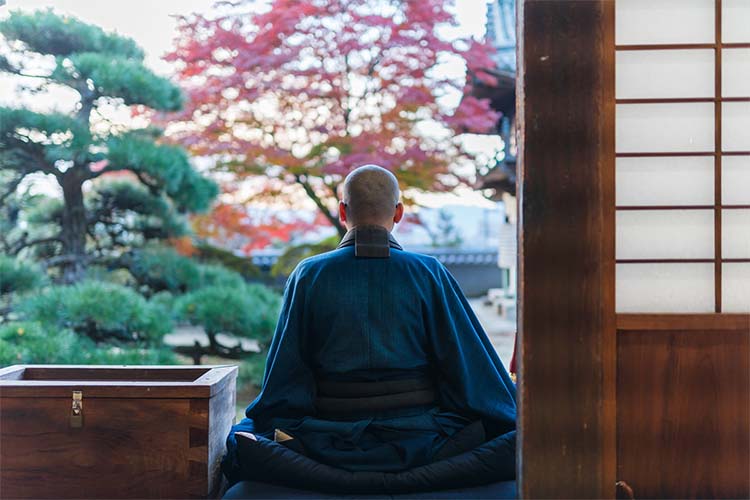
Japan offers a variety of wellness retreats that cater to individuals seeking relaxation, rejuvenation, and self-improvement. These retreats provide an opportunity for travelers to immerse themselves in the rich culture and traditions of Japan while focusing on their physical and mental well-being.
Wellness retreats in Japan combine traditional culture with modern practices, providing a unique and transformative experience. From serene mountain locations to bustling city centers, these retreats offer a wide range of options tailored to suit individual preferences and needs. Japanese traditional wellness retreats often include Zen meditation.
While yoga is widely practiced in Japan, there are other alternative practices that can complement or offer a different experience to those seeking physical, mental, and spiritual well-being. These practices, such as chi, pilates, and acupuncture, focus on enhancing an individual’s overall health and wellness using various approaches.
Chi, also known as Qi, or “Ki” in Japanese, refers to the vital energy that flows through our bodies, connecting mind, body, and spirit. This life force helps maintain the function of our organs, meridians, and overall well-being. Practices that work with chi include Traditional Chinese Medicine, Qi Gong (In Japanese it’s called “Kikou”), and Tai Chi. These activities focus on the harmonious flow of energy throughout the body, promoting relaxation, balance, and self-healing.
Meridians are the energy pathways in our body that connect and transport chi. When these pathways function optimally, our body can communicate effectively and heal itself. However, blockages in meridians can lead to various physical and emotional imbalances. Acupuncture is a well-known practice in Japan that addresses these issues through the insertion of thin needles into specific points on the body. By doing so, energy is rebalanced along the meridian, restoring health and overall well-being. Incorporating acupuncture into one’s wellness routine may aid in enhancing the benefits of yoga and other practices.
Pilates is another popular exercise method in Japan, which emphasizes proper alignment, core strength, and muscle balance. Developed by Joseph Pilates in the early 20th century, this practice is rooted in the belief that physical and mental health are interrelated. In Japan, many gym facilities offer Pilates classes, meaning you can easily access this alternative activity. Pilates can provide a toning, strengthening workout that can effectively complement a yoga practice or stand alone as a full-body conditioning regimen.
In summary, beyond yoga, a variety of alternative practices are available in Japan for individuals interested in enhancing their well-being. Focusing on different aspects, such as chi, meridians, and physical strength, these activities can provide a balanced approach to achieving a healthy, well-rounded lifestyle.
